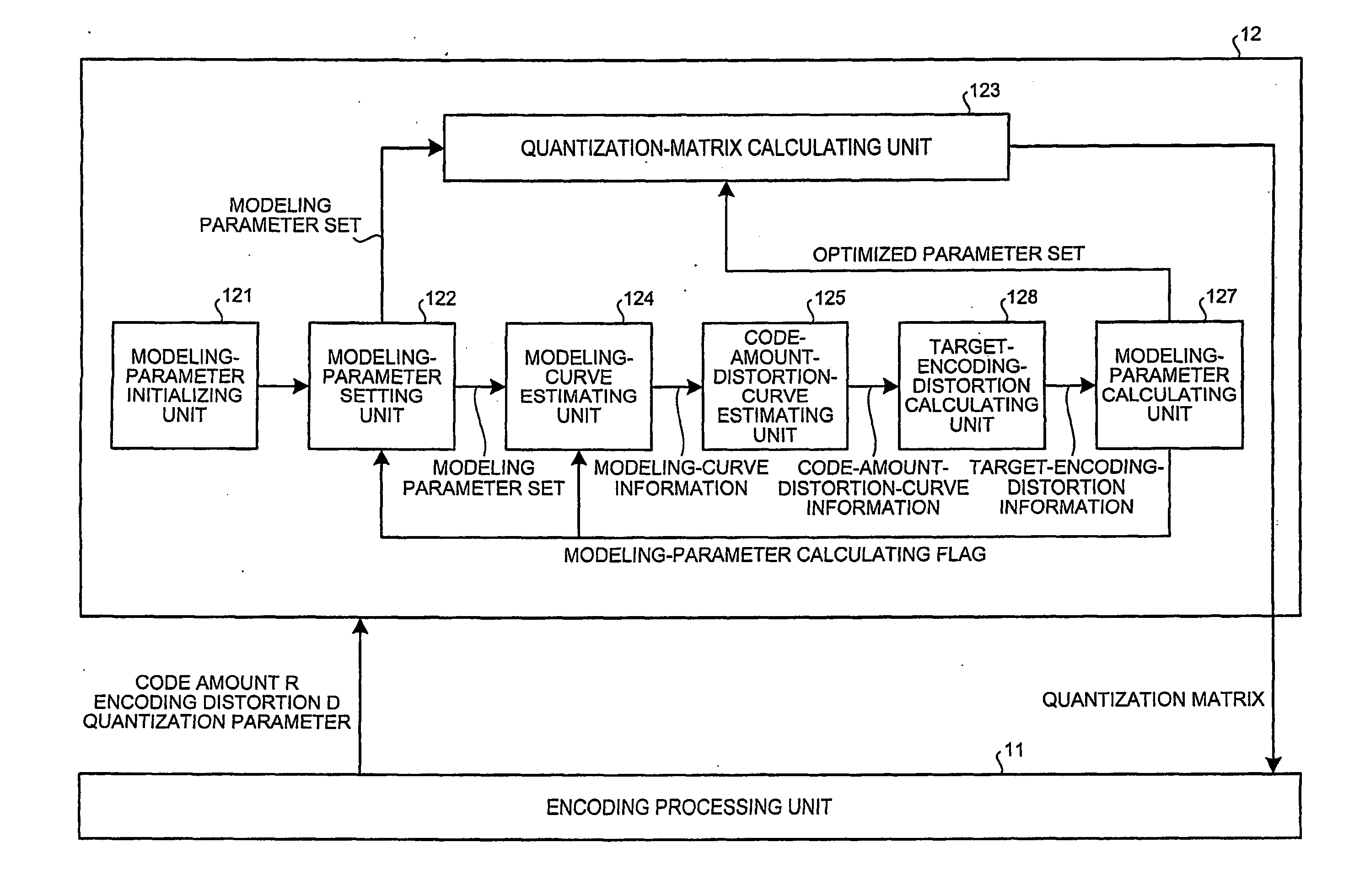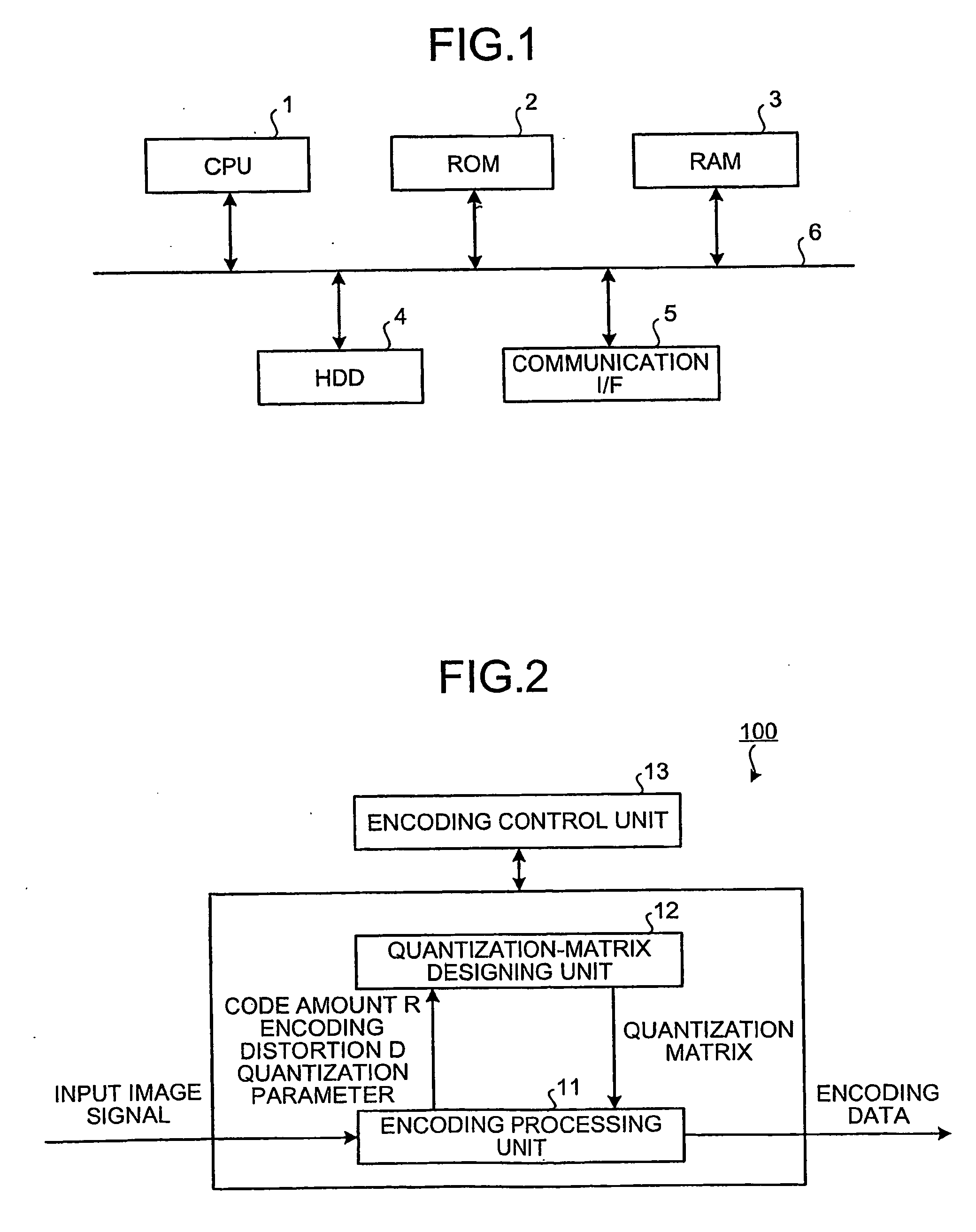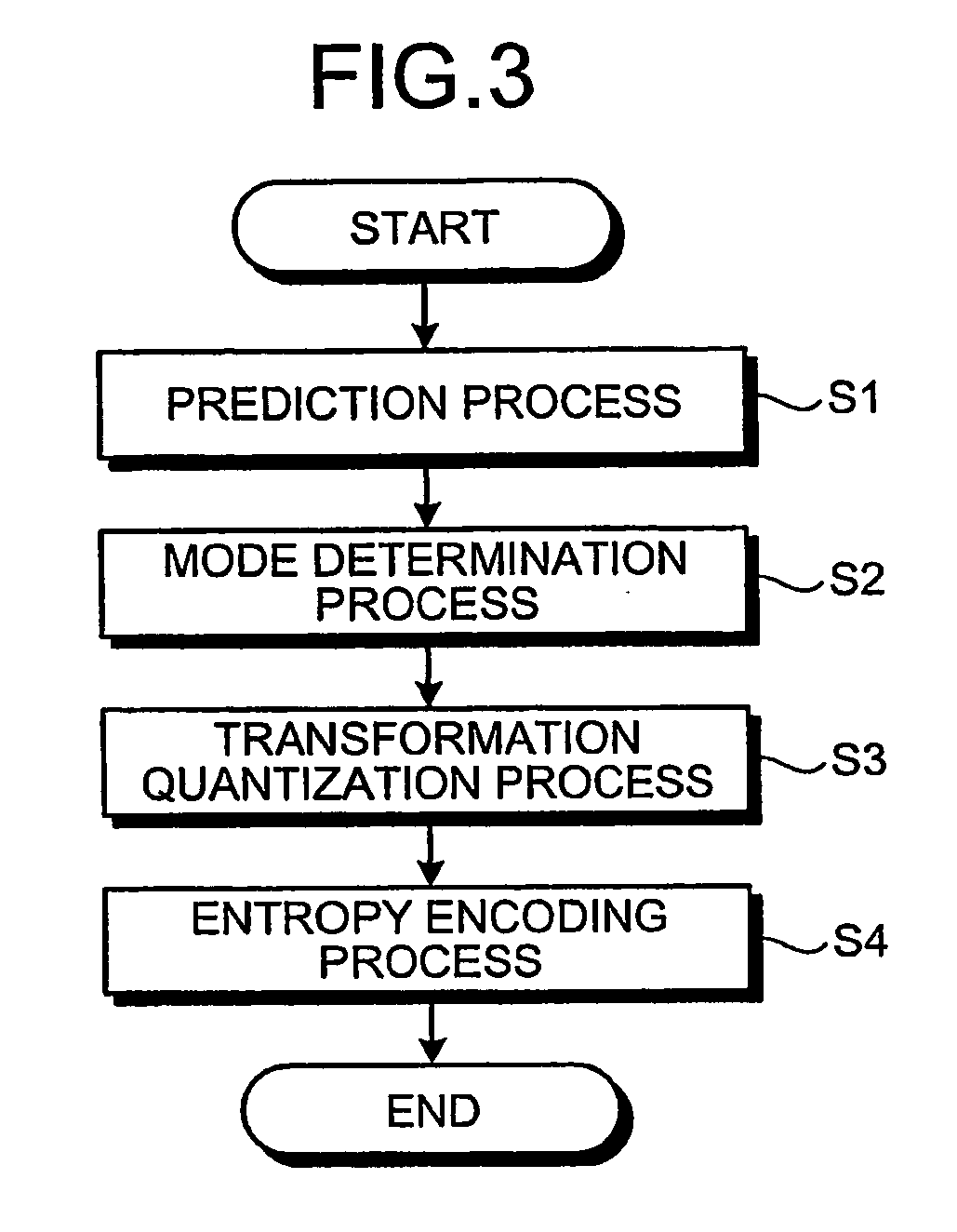Method and apparatus for encoding image
a technology of image encoding and image, applied in the direction of electrical equipment, instruments, computing, etc., can solve the problems of inapplicability of the method proposed by s. w. wu, inability to perform inefficient encoding, and relatively large process cos
- Summary
- Abstract
- Description
- Claims
- Application Information
AI Technical Summary
Problems solved by technology
Method used
Image
Examples
first embodiment
[0033]FIG. 1 is a schematic diagram of an image encoding apparatus 100 according to a As shown in FIG. 1, the image encoding apparatus 100 includes a central processing unit (CPU) 1, a read only memory (ROM) 2, a random access memory (RAM) 3, a hard disk drive (HDD) 4, and a communication interface (I / F) 5, which are connected each other via a bus 6.
[0034]The CPU 1 performs an overall control of the components constituting the image encoding apparatus 100 by using a predetermined area of the RAM 3 as a working area and executing various processes (for example, an image encoding process which will be described later) in cooperation with various control programs stored in advance in the ROM 2 and the HDD 4 (hereinafter, collectively referred to as “a storing unit”).
[0035]The ROM 2 stores therein various programs for controlling the image encoding apparatus 100 and various pieces of setting information in a read-only manner.
[0036]The RAM 3 is a storage device such as a synchronous dyn...
second embodiment
[0129]An image encoding apparatus is explained below.
[0130]FIG. 16 is a block diagram illustrating a functional configuration of an image encoding apparatus 200 according to the second embodiment. As for a function unit that is different from the first embodiment, an area dividing unit 14 is added. In the same manner as the other function units, the CPU 1 controls each of the components according to a predetermined program stored in advance in the storing unit so that the area dividing unit 14 is generated in the RAM 3.
[0131]The area dividing unit 14 has a function of dividing the area in the encoding frame by using a feature amount of the input image signal. The quantization-matrix designing unit 12 designs the quantization matrix by using the code amount R and the encoding distortion D obtained from a tentative encoding by the encoding processing unit 11. Therefore, an optimum solution of the quantization matrix is different depending on a level of the encoding. By performing an ...
third embodiment
[0150]As describe above, the switch 153 is controlled dynamically according to the phase of the image encoding apparatus 300. Therefore, because the quantization matrix can be designed using an image reduced through the down-sampling unit 151 and the post-filter unit 152 when designing the quantization matrix, and the encoding can be performed on the input image when performing the actual encoding, it is possible to greatly reduce a time for designing the quantization matrix.
[0151]Although the simple one-pixel skipping down-sampling method is explained according to the third embodiment, the present invention is not limited to this scheme. For instance, a sophisticated down sampling can be used according to the signal characteristic and the circuit characteristics. Furthermore, the reduced image is not necessarily limited to the ¼ reduced image, but a ½ reduced image or a ⅛ reduced image can be used as the reduced image. However, as the image size becomes smaller, a degradation of t...
PUM
 Login to View More
Login to View More Abstract
Description
Claims
Application Information
 Login to View More
Login to View More - R&D
- Intellectual Property
- Life Sciences
- Materials
- Tech Scout
- Unparalleled Data Quality
- Higher Quality Content
- 60% Fewer Hallucinations
Browse by: Latest US Patents, China's latest patents, Technical Efficacy Thesaurus, Application Domain, Technology Topic, Popular Technical Reports.
© 2025 PatSnap. All rights reserved.Legal|Privacy policy|Modern Slavery Act Transparency Statement|Sitemap|About US| Contact US: help@patsnap.com



